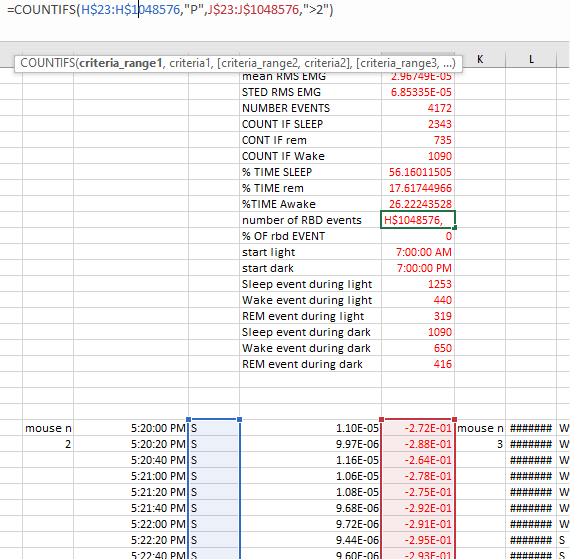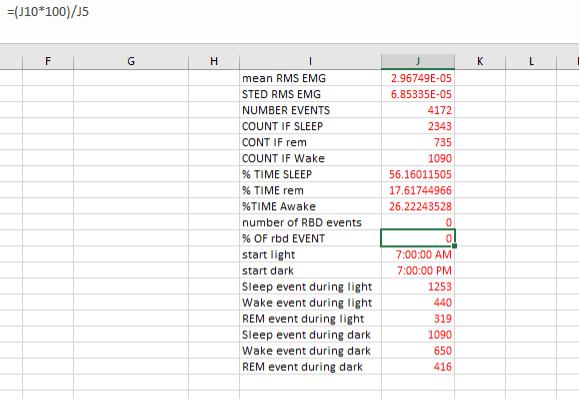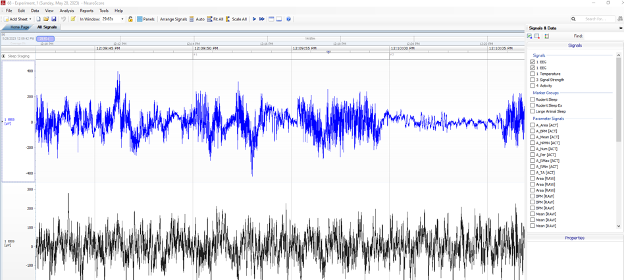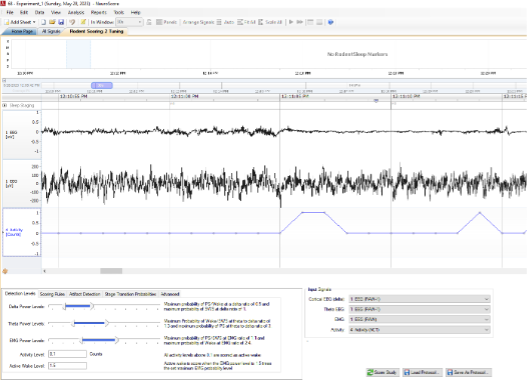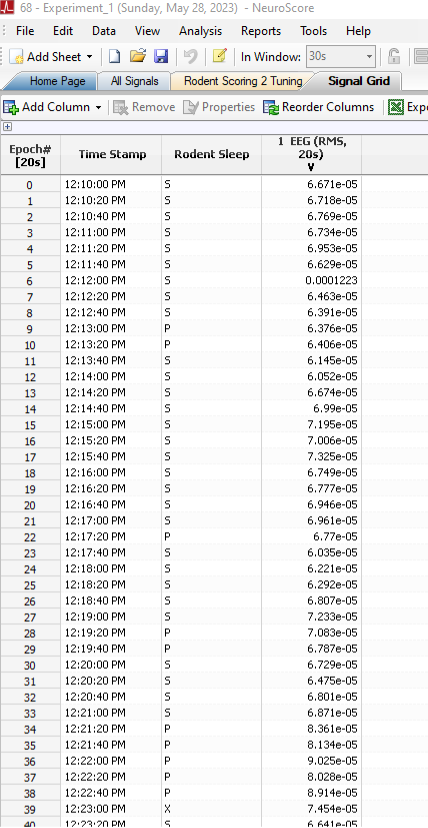Sleep scoring using Neuroscore
daniel.dautan daniel, Per Svenningsson
Abstract
Analysis of sleep data using Neuroscore v.30
Steps
Open the file using File – Open Recording – Browse – Open
If the signal is unusable, just move to another recording. Here the top signal is EMG and bottom is EEG. You can see clear changes in EMG corresponding to movement and nice oscillation in EEG, the signal is as expected.
Copy this to excel:
a) Using the time you can extract the total number of sleep events, number of Awake, REM and NREM and thus express it onto %
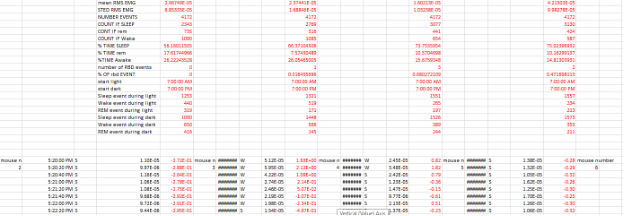
b) You can extract the % of time in dark/light phase based on the timestamps
c) You can average/stdev EMG signal and thus express is as a z score
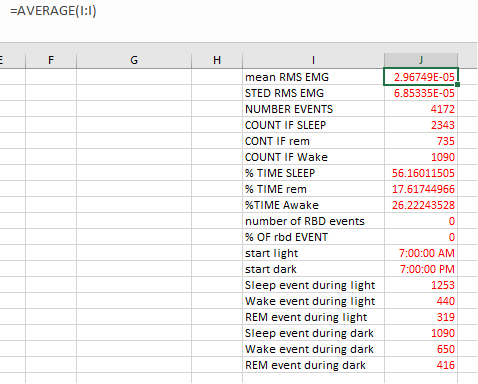
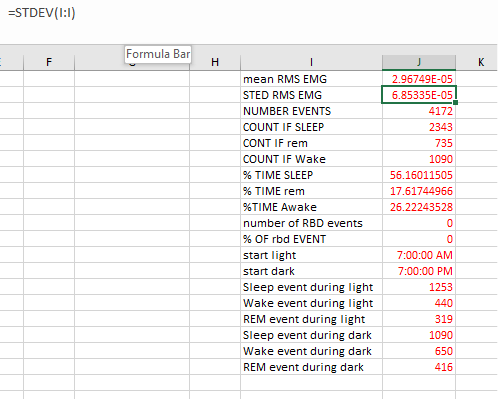
Using the z-score of the EMG, you can detect significant increase (SD >2SD) during REM events. This will be the rem sleep behavior disorders events.
